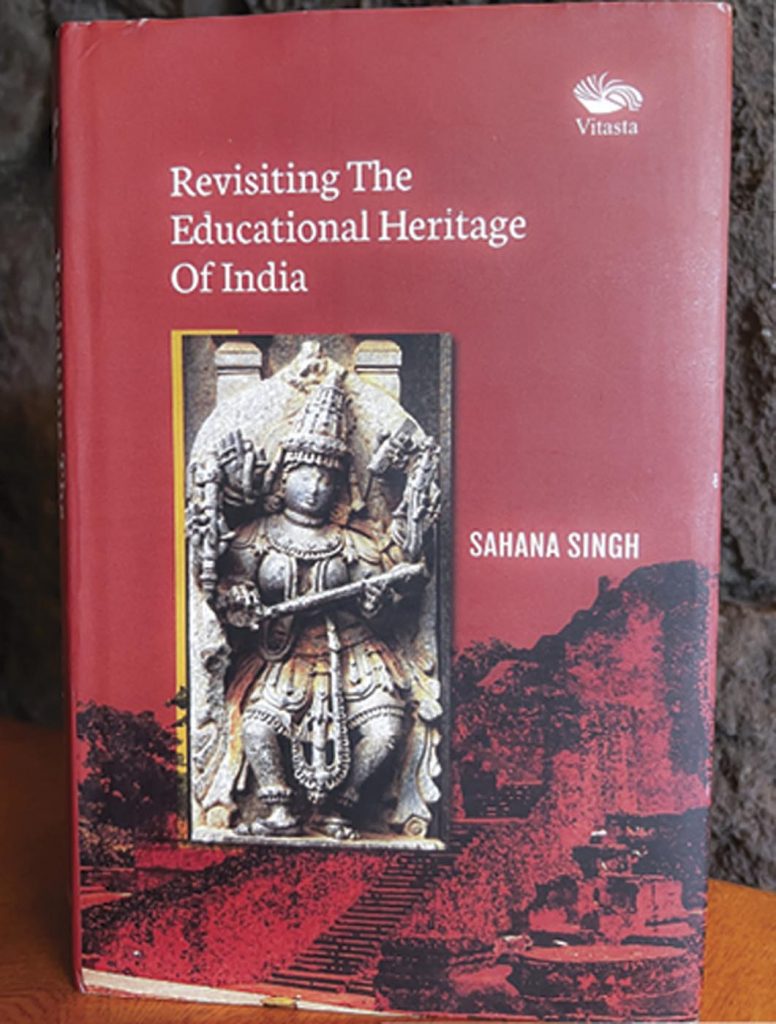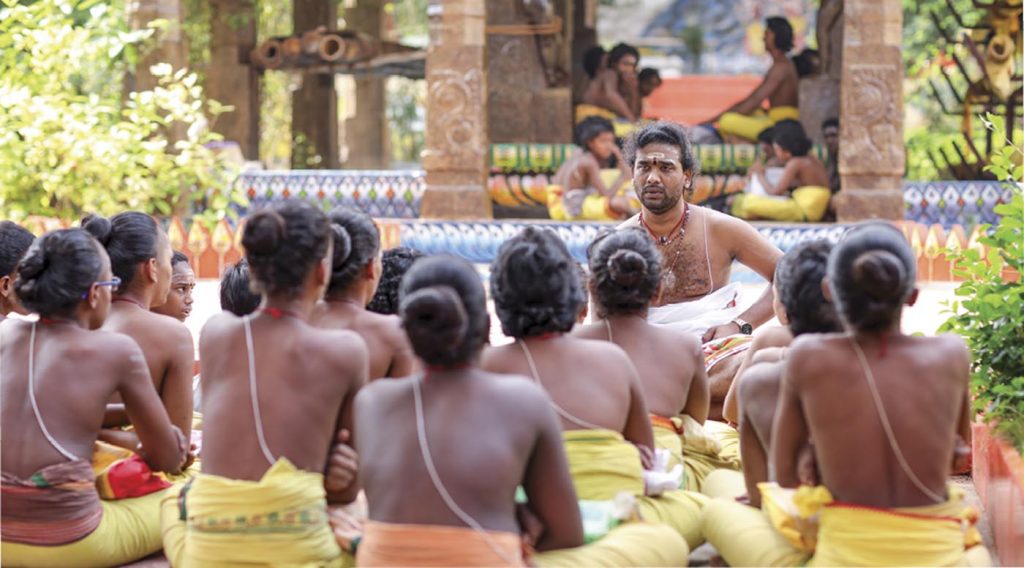A glimpse into ancient India’s truly holistic systems of learning
If you aren’t already aware that the modern university originated in India, Sahana Singh’s book Revisiting the Educational Heritage of India will be an eye-opener. She explores this idea and more in great depth with a plethora of evidence, so elegantly composed as to be, as they say, “unputdownable.”
As its title implies, this book revisits and expands on ideas from the author’s previous self-described “long essay,” The Educational Heritage of India, published in 2017. The new book is by no means a clone; it is almost five times as long as its predecessor and filled with additional explanations and over 200 citations, which you will appreciate if you have read the long essay.

The preface’s preamble refutes or clarifies certain misconceptions that the first book generated. Points include “Don’t blame invaders and colonizers for the ills afflicting India,” “It’s regressive to dwell on the past,” “Do not present a glorified image of ancient India,” and “Why is there no descriptive detail of the courses and disciplines studied in schools and colleges in India?” With this foundation, Singh’s academic work sets out to fill a void left by modern scholars and their fixation on Western civilizations such as the Greek and Roman.
Singh begins by describing a land of forest schools as early as 1000 bce, where groups of gurus would educate dedicated students on topics ranging from politics to the science of time. Unlike today’s universities, there was more to lessons than material knowledge. Gurus engaged their students in character building, directing their energies to the pursuit of knowledge, and understanding the inner consciousness, with the eventual goal of Self-knowledge. Here Singh shows us a glimpse of the first holistic education, one most universities today only claim to possess.
The oldest university in India dated back to the sixth century bce. Takshashila’s large university, and many others, such as Nalanda, had students studying law and medicine—even performing successful surgeries on live patients. These schools were not obscure phenomena. Students from as far as Korea came to Nalanda, where over 80 percent of applicants failed the rigorous entrance exam, an acceptance rate rivaling modern universities.
Logic and debate flourished among these centers of knowledge throughout India. As Singh writes, “This love for debate and presentation of arguments from ancient times formed the root of democracy, which has endured even today. These civilized and meticulously rule bound debates allowed faith and science to coexist. Novel astronomical theories were challenged in debate, and no one was accused of heresy. “
Perhaps even more important than the culture of students was the demanding culture of the guru, acharya or teacher. The guru, states Singh, was “central to not just India’s educational system but to the entire edifice of Indian civilization.” While teachers today are critical to a functional society, these gurus occupied an even greater role as an embodiment of higher knowledge, established in supreme consciousness.
One could not simply become a guru by attending a university. To be considered a guru, one must have: “detachment, virtuousness, austerity, selflessness, humility, lack of desire, and freedom from lust.” These ideals make one very effective at transmitting knowledge. The inverse is true as well, as most students have observed.
The knowledge accumulated by these students and teachers did not stay in India but was dispersed throughout the world. Scholars from East and West came to learn and collect documents. So great was the repute of these schools that one man, Xuanzang, spent 17 years of his life collecting works to take back to China.

This flow included knowledge commonly considered Western in origin, such as medicine. Medieval European medicine found its roots in Arabic medicine, which was founded on translated Sanskrit texts.
Singh quotes a Dr. Wise, who writes, “In the relationship between the Greeks and Indians, the Greeks were the learners.” In addition to medicine, great scholars, such as Pythagoras, who studied in India incorporated Vedic beliefs, such as vegetarianism and metempsychosis, or reincarnation. Sadly, all good things must come to an end and an era of repeated foreign invasion destroyed temples, universities, and innumerable academic works. If that was not enough, a period of colonial rule by a civilization convinced of their innate superiority stomped out any remaining embers of its pedagogic heritage.
Singh does not want us to dwell on the past. She looks instead to the present, soberly stating that a complete resurrection of India’s ancient system of learning is “both impractical and undesirable.” However, she describes many potent aspects of this system that can and should be implemented to improve modern educational systems. These include a truly holistic education, one where higher powers of awareness and creativity are developed; a sacred view of Nature that permeates its foundations; usage of ancient Indian texts for inspiration; and incorporation of ethics, along with practices such as pranayama and hatha yoga.
The book’s title, unfortunately, may lead readers unfamiliar with Singh’s earlier work to assume it is an impenetrable historical treatise, fit only for those studying in the field. Similarly, the cover art parallels standardized American textbooks which are filled with endless facts fit only to be read by the insomniac. After one reads and understands the text, however, the cover reveals its profundity. A stone carving of the Goddess of learning, Saraswati, is juxtaposed with the remains of Nalanda University, which was destroyed by invaders. The cover art can be taken as a testament to the eternity of knowledge and truth, despite the destruction of its temporal external manifestation.
It would be unfortunate if this book were ignored because of such a small matter, as its contents would be a great boon in the hands of many, whether academics or not. Though dealing with complex topics, the book stays accessible and enjoyable to read.
We highly recommend this book to anyone unfamiliar with India’s meritorious past, especially those who will, in any way, be responsible for educating the minds of tomorrow, be they lecturers, politicians or parents. The book is also an excellent resource for the reversal of the Eurocentric narrative that colonial empires were solely responsible for bringing systematic education to the world.
Beyond just the glorification of India and narrative reversal, the text alludes to a key of human potential. By methodically linking prominent creative feats of mankind such as art, science, and philosophy back to ancient India, we see the roots of these feats not as the result of an innately superior Western civilization, but of a people who valued knowledge above all else and with this spirit mastered the control of Man’s mind, energies, and unlimited creative potential.
Though this supreme art has been lost for many, it is in its ascendancy today, aided by a deep understanding of the value these ancient civilizations possessed, an understanding that can be aided by a thorough reading of Singh’s opus.
